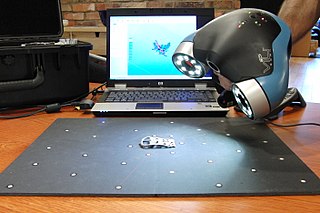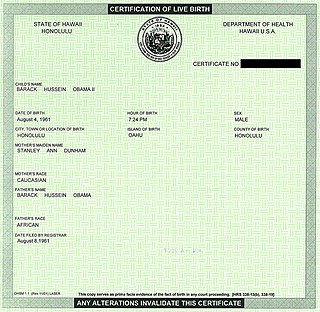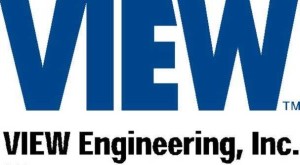
The Universal Product Code is a barcode symbology that is widely used worldwide for tracking trade items in stores.

A barcode or bar code is a method of representing data in a visual, machine-readable form. Initially, barcodes represented data by varying the widths, spacings and sizes of parallel lines. These barcodes, now commonly referred to as linear or one-dimensional (1D), can be scanned by special optical scanners, called barcode readers, of which there are several types.

Holography is a technique that enables a wavefront to be recorded and later reconstructed. It is best known as a method of generating three-dimensional images, and has a wide range of other uses, including data storage, microscopy, and interferometry. In principle, it is possible to make a hologram for any type of wave.

A barcode reader or barcode scanner is an optical scanner that can read printed barcodes, decode the data contained in the barcode on a computer. Like a flatbed scanner, it consists of a light source, a lens, and a light sensor for translating optical impulses into electrical signals. Additionally, nearly all barcode readers contain decoder circuitry that can analyse the barcode's image data provided by the sensor and send the barcode's content to the scanner's output port.
Optical mark recognition (OMR) collects data from people by identifying markings on a paper. OMR enables the hourly processing of hundreds or even thousands of documents. For instance, students may remember completing quizzes or surveys that required them to use a pencil to fill in bubbles on paper. A teacher or teacher's aide would fill out the form, then feed the cards into a system that grades or collects data from them.

PDF417 is a stacked linear barcode format used in a variety of applications such as transport, identification cards, and inventory management. "PDF" stands for Portable Data File. The "417" signifies that each pattern in the code consists of 4 bars and spaces in a pattern that is 17 units (modules) long. The PDF417 symbology was invented by Dr. Ynjiun P. Wang at Symbol Technologies in 1991. It is defined in ISO 15438.
Hand Held Products was a US electronics manufacturer, established in 1981 in North Carolina. The company was a manufacturer of linear and 2D handheld barcode scanners based on imaging technology. Its product range included rugged mobile computers, image kiosks, and barcode verification devices. Its range of data collection and communication products were designed for mobile, on-site, and transaction processing applications. In 2007, the company was subsumed into the Honeywell Group.

Bendix Corporation is an American manufacturing and engineering company which, during various times in its existence, made automotive brake shoes and systems, vacuum tubes, aircraft brakes, aeronautical hydraulics and electric power systems, avionics, aircraft and automobile fuel control systems, radios, televisions and computers.
Automatic identification and data capture (AIDC) refers to the methods of automatically identifying objects, collecting data about them, and entering them directly into computer systems, without human involvement. Technologies typically considered as part of AIDC include QR codes, bar codes, radio frequency identification (RFID), biometrics, magnetic stripes, optical character recognition (OCR), smart cards, and voice recognition. AIDC is also commonly referred to as "Automatic Identification", "Auto-ID" and "Automatic Data Capture".

A Data Matrix is a two-dimensional code consisting of black and white "cells" or dots arranged in either a square or rectangular pattern, also known as a matrix. The information to be encoded can be text or numeric data. Usual data size is from a few bytes up to 1556 bytes. The length of the encoded data depends on the number of cells in the matrix. Error correction codes are often used to increase reliability: even if one or more cells are damaged so it is unreadable, the message can still be read. A Data Matrix symbol can store up to 2,335 alphanumeric characters.

3D scanning is the process of analyzing a real-world object or environment to collect three dimensional data of its shape and possibly its appearance. The collected data can then be used to construct digital 3D models.

Holographic data storage is a potential technology in the area of high-capacity data storage. While magnetic and optical data storage devices rely on individual bits being stored as distinct magnetic or optical changes on the surface of the recording medium, holographic data storage records information throughout the volume of the medium and is capable of recording multiple images in the same area utilizing light at different angles.

Intermec is a manufacturer and supplier of automated identification and data capture equipment, including barcode scanners, barcode printers, mobile computers, RFID systems, voice recognition systems, and life cycle services.

A barcode system is a network of hardware and software, consisting primarily of mobile computers, printers, handheld scanners, infrastructure, and supporting software. Barcode systems are used to automate data collection where hand recording is neither timely nor cost effective. Despite often being provided by the same company, Barcoding systems are not radio-frequency identification (RFID) systems. Many companies use both technologies as part of larger resource management systems.

Stephen Anthony Benton was the inventor of the rainbow hologram and a pioneer in medical imaging and fine arts holography. Benton held 14 patents in optical physics and photography, and taught media arts and sciences at Massachusetts Institute of Technology (MIT). He was the E. Rudge ('48) and Nancy Allen Professor of Media & Sciences, and the Director for Center for Advanced Visual Studies (CAVS) at MIT.

Security paper is a paper used in security printing that incorporates features that can be used to identify or authenticate a document as original, e.g., watermarks or invisible fibres in paper, or features that demonstrate tamper evidence when fraud is attempted, e.g., to remove or alter print such as amounts or signatures on a cheque. Examples of this kind of papers are used for banknotes and used for identification such as passports and certificates, such as birth certificates and different types of academic and qualification certificates, as well as government documents, e.g., voting ballots and tax strips. This also extends to personal and business checks, stock certificates, certificates issued by financial institutions and sensitive government-issued documents. The main use of security paper is to stop people from counterfeiting.

VIEW Engineering was one of the first manufacturers of commercial machine vision systems. These systems provided automated dimensional measurement, defect detection, alignment and quality control capabilities. They were used primarily in the Semiconductor device fabrication, Integrated circuit packaging, Printed circuit board, Computer data storage and Precision assembly / fabrication industries. VIEW's systems used video and laser technologies to perform their functions without touching the parts being examined.
Barcode technology in healthcare is the use of optical machine-readable representation of data in a hospital or healthcare setting.

Datalogic S.p.A. is an Italian company working in the automatic data capture and process automation markets. The group specializes in the design and production of barcode readers, mobile computers, radio-frequency identification, sensors for detection, measurement and safety, vision and laser marking systems. Datalogic products are used in many supermarkets and points of sale, at airports, at shipping and postal services, and in factories and hospitals worldwide.
Barcode library or Barcode SDK is a software library that can be used to add barcode features to desktop, web, mobile or embedded applications. Barcode library presents sets of subroutines or objects which allow to create barcode images and put them on surfaces or recognize machine-encoded text / data from scanned or captured by camera images with embedded barcodes. The library can support two modes: generation and recognition mode, some libraries support barcode reading and writing in the same way, but some libraries support only one mode.












